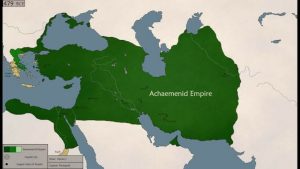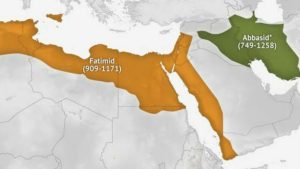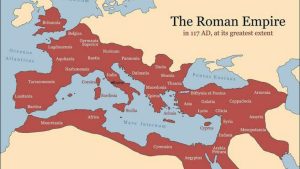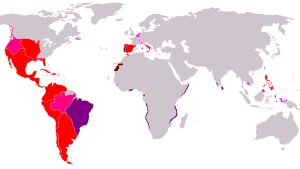Most Powerful Empires in History: An empire is a political entity composed of numerous countries and peoples that is “typically formed by conquest and divided between a dominant center and subordinate peripheries.” Several empires in human history have vied for the title of biggest of all time, depending on the criteria and method of measurement used.
Size may be measured in a variety of ways, including area, population, economics, and power. Area is the most often used of these since it has a pretty definite definition and can be measured with reasonable precision. Between 1978 and 1997, Estonian political scientist Rein Taagepera published a series of academic articles on the territorial extents of historical empires, defining an empire as “any relatively large sovereign political entity whose components are not sovereign” and its size as the area over which the empire has some undisputed military and taxation prerogatives.
Recommended: Countries with the best education system in the world
Top 10 Greatest And Most Powerful Empires in History
1. Achaemenid Empire: Cyrus the Great, known as King of Kings (Shahanshah), created the empire in 550 B.C.E. The Persian Empire, which fell to Alexander the Great in 330 B.C.E., shaped global cultures and empires. The Persian Empire, the first great empire, established the template for subsequent empires. When most of the oikumene, or civilized, inhabited, populated globe was in or around the Middle East, the Persian Empire existed.

Thus, the Persian Empire, which governed much of the Middle East, reigned over more people than any other empire in history. The empire had 49.4 million people in 480 B.C.E., 44% of the world population. The Persian Empire was the first to unite the Middle East, North Africa, Central Asia, India, Europe, and the Mediterranean. It inspired Greek and Indian dynasties. The Persian Empire’s military prowess was essential to its creation, but its abrupt fall to Alexander’s army has overshadowed its military successes. The Babylonians, Lydians, Egyptians, and Gandhara (now Pakistan) were conquered by Persian campaigns.
The Persians felt they fulfilled their aims in Greece and that more Greeks lived in the empire than not, despite exaggeration and misunderstanding. The Persian Empire brought peace to the Middle East for two hundred years, an achievement seldom repeated. The Persian Empire left the globe with a mail system, roads, a single administrative language (Imperial Aramaic), ethnic autonomy, and a bureaucracy. Through Judaism, Zoroastrianism inspired Abrahamic faiths’ conceptions of free choice, paradise, and hell.
2. The Caliphate: Muhammad built the Arab Empire, or Caliphate, which ruled much of Arabia by 632 C.E. While Islam was founded and propagated by this dynasty, several following dynasties were Muslim or governed by Muslims but not Arab. The four Rightly-Guided Caliphs (successors) were chosen by agreement and acclimation till 661 C.E. After conquests ceased, the hereditary Umayyad Caliphate lasted until 750 C.E., succeeded by the Abbasid Caliphate.

The Abbasids ruled Baghdad as religious figurehead Caliphs until the Mongols destroyed the city in 1258 C.E. After 900 C.E., competing dynasties, including Turkic and Persian, and Caliphates in Spain and Egypt started to fracture the empire politically. However, the Arab Empire was remarkable for its military victories and legacy. A loosely organized, tribal people on the outskirts of human civilization conquered the Byzantine Empire and the Sassanid Persian Empire, both of which had populations and resources larger than the Arabian Desert.
Arab generals, especially the third Caliph Omar, who conquered Egypt to Persia in ten years, are examples of how ideological zeal can overcome technological and organizational shortcomings. The Arab Empire expanded multiple times greater than the Roman Empire in 100 years. Like the Persian Empire, the Arab Empire linked Africa, Europe, Central Asia, India, and China. For the first time, commodities and knowledge from all three locations mixed, resulting in algebra. The Arab Empire’s greatest legacy is Islam, practiced by over a billion people.
Also see: Countries with the Most billionaires in the world
3. Roman Empire: The Roman Empire was a magnificent empire. If the Eastern Roman Empire (Byzantine Empire) is included, the Romans conquered and held vast territories for hundreds or thousands of years. After being subjugated, everyone wanted to be Roman, which meant joining a refined, urbane, classical society. The Roman Empire shaped many current elements. Romans preserved Greek architecture, philosophy, and science.

Christianity became a major religion once the Romans accepted it. Roman Law shaped all Western legal systems. Roman institutions also influenced contemporary democratic government. The Founding Fathers were inspired by British and Roman methods, not Greece, the “birthplace of democracy.” Many of them talked of their hatred for the Athenian democracy and their appreciation for the Roman type of mixed governance, where monarchical, aristocratic, and democratic components shared power.
The American political system’s branches resemble this Roman institutional arrangement. Caesar’s magnificence inspired subsequent rulers when the Roman Republic became the Roman Empire. Romans persisted. They overcame repeated failures against impossible odds to overcome their enemy. After the Battle of Cannae in 216 B.C.E., Hannibal almost crushed the Romans, but fourteen years later, the Romans landed an army at Carthage and defeated them.
For decades, the Roman legions ruled over practically all other civilized peoples in the Mediterranean and Near East save the Persians, encountering only sporadic attacks by unorganized tribes. Crisis and civil strife, not Germanic barbarians, brought the empire down. The Eastern Empire lasted until 1453 C.E., extending Roman political history by two millennia.
4. British Empire: At its peak, the British Empire was the biggest empire in history, covering more than 13,000,000 square miles, or over a fifth of the Earth’s total surface area. It ruled over more than 500 million people, or over a fifth of the world’s population. It was reportedly remarked that the “sun never sets on the British Empire.”

As a consequence, the impact it left on these conquered territories in terms of political reform, cultural exchanges, and way of life is enormous. The English language, which it propagated, is now the world’s second most commonly spoken language, and many linguists feel that English is the world’s de facto standard language. The British empire is without a doubt one of the most powerful empires in human history.
Recommended: Oldest Banks in The World still in existence
5. Mongol Empire: It all began in his childhood, when Temujin (later known as Genghis Khan) promised to bring the globe to his feet. He was nearly there. His first task was to unite the many Mongolian tribes. Then he set his sights on China, and the rest, as they say, is history. The Mongol Empire stretched from Vietnam to Hungary and was the world’s biggest continuous empire.

Unfortunately, their dominion was too large to manage, and there was no unity among the many civilizations. The Mongols were daring and brutal combatants, but they lacked administrative experience. Throughout history, the Mongols have been portrayed as a harsh and vicious nation.
6. Russian Empire: The Russian Empire flourished from 1721 to the 1917 Russian Revolution. It was the successor of Russia’s Tsardom and the forerunner of the Soviet Union. It was the world’s second biggest continuous empire, only exceeded by the Mongol Empire, and the third-largest empire, behind only the British Empire and the Mongol Empire. It spanned from Eastern Europe through Asia and into North America in 1866.

Also see: Most beautiful states in the United States of America
7. Spanish Empire: More than any other empire at the time, the Spanish Empire proved to be an adept in colonization in the 16th century. Their colonies provided them about 7.5 million square miles of territory, or around 13% of the Earth’s surface. Although the Spanish Empire spanned over four centuries, its peak lasted just around 40 years.Spain commissioned expeditions to discover new planets beyond the seas. The two most significant were Columbus’ accidental discovery of the Americas in 1492 and Vasco de Gama’s discovery of India. Then they started to use their wealth to gain dominance, conquering countries in Central and South America.

The Incas of Peru, the Aztecs of Central America, and the Mayans of Yucatan were all vanquished by the Spanish. The Spanish only inhabited a few locations in North America, mostly in Florida and on the West Coast in what is now Oregon, Alaska, and Washington. They also established themselves in what is now British Columbia (modern-day Canada). Spain also possessed colonies on the other half of the globe, including Africa and portions of Europe.However, the danger of military invasion by other European powers, as well as severe monetary issues (particularly after being embroiled in two North American wars), forced Spain to let most of her colonies to retreat.
8. Portuguese Empire: The Portuguese Empire was the first worldwide empire in history, as well as one of the most long-lived contemporary European colonial empires. The empire started in 1415 with the acquisition of Ceuta and concluded in 1999 with the transfer of Macau. Brazil, the empire’s most important colony, gained independence in 1822. Except for Macau, the empire’s leadership acknowledged the independence of all its colonies after a battle to topple the rule in 1974. In 1999, Macau was surrendered to China.

Recommended: Differences Between A Phrase And A Clause (With Examples)
9. Holy Roman Empire: They were called the “superpower” of the Middle Ages. At its peak, the Holy Roman Empire included sections of eastern France, Germany, northern Italy, and western Poland.
Despite being a minor empire in terms of empires, its impact on the history of Central Europe may still be felt today. The Empire lasted from the early Middle Ages through the nineteenth century. The Empire was legally dissolved on August 6, 1806, when the last Holy Roman Emperor, Francis II (after Francis I of Austria), abdicated in the aftermath of a military defeat by Napoleon’s French. Following its demise, the following countries arose: Switzerland, Holland, the Austrian Empire, Belgium, the Prussian Empire, the Principality of Liechtenstein, the Rhine Confederation, and the first French Empire.
10. Ottoman Empire: At its height of dominance (16th-17th centuries), the Ottoman Empire controlled most of Southeastern Europe, Western Asia, and North Africa. It had 29 provinces and several vassal nations, some of which were integrated into the empire later on, while others were given varied levels of autonomy throughout the course of centuries. For six centuries, the empire sat at the crossroads of the Eastern and Western civilizations.
The Ottoman Empire was, in many ways, an Islamic successor to the Eastern Roman (Byzantine) Empire, with Constantinople as its capital city and broad control over areas surrounding the eastern Mediterranean during the era of Suleiman the Magnificent (ruled 1520 to 1566).
Recommended: Most Beautiful Stadiums In The World 2023
In conclusion, based on the preceding discussion, the biggest empires in history were enormous and influential, spanning continents and having a substantial influence on civilizations. They influenced the world’s political, cultural, and economic landscapes, demonstrating the strength and complexity of human communities across time.

Edeh Samuel Chukwuemeka, ACMC, is a lawyer and a certified mediator/conciliator in Nigeria. He is also a developer with knowledge in various programming languages. Samuel is determined to leverage his skills in technology, SEO, and legal practice to revolutionize the legal profession worldwide by creating web and mobile applications that simplify legal research. Sam is also passionate about educating and providing valuable information to people.